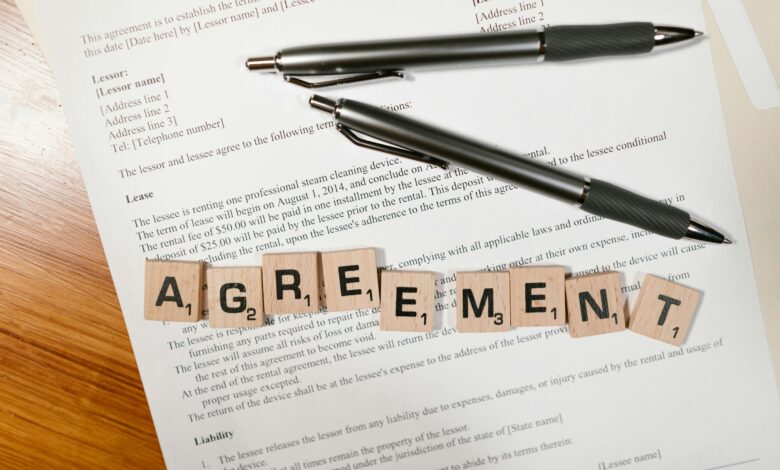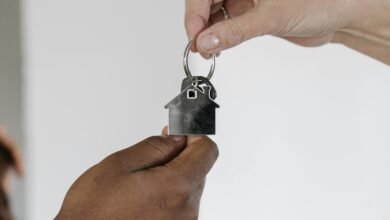How to Read and Understand a Lease Agreement: A Comprehensive Guide

A lease agreement is a legally binding contract between a landlord and a tenant that outlines the terms and conditions of renting a property. Whether you’re renting an apartment, house, or commercial space, understanding your lease is crucial to protecting your rights and avoiding potential disputes. Lease agreements can be lengthy and filled with legal jargon, but breaking them down into manageable sections makes them easier to comprehend.
In this guide, we’ll walk you through how to read and understand a lease agreement step by step, ensuring you know exactly what you’re signing.
Why Understanding Your Lease Agreement Matters
Before diving into the details, it’s important to recognize why reading and understanding your lease is so critical:
- Legal Protection: The lease defines your rights and responsibilities as a tenant, as well as those of the landlord.
- Financial Clarity: It specifies rent amounts, due dates, and additional costs like utilities or deposits.
- Avoiding Disputes: Misunderstandings about lease terms can lead to conflicts. Knowing the rules upfront helps prevent issues.
- Long-Term Planning: Understanding the lease ensures you’re prepared for renewal, termination, or other eventualities.
Key Sections of a Lease Agreement
Most lease agreements follow a standard structure. Here’s a breakdown of the key sections and what to look for in each:
1. Parties Involved
This section identifies the landlord and tenant(s). Pay attention to:
- Full names and contact information of all parties.
- Ensure your name (and any co-tenants) is spelled correctly.
2. Property Details
The lease should clearly describe the rental unit. Verify:
- The full address, including apartment number if applicable.
- Any included amenities (e.g., parking spaces, storage units).
- Exclusions, such as shared spaces or restricted areas.
3. Lease Term
This outlines the duration of the lease. Look for:
- Start and end dates of the tenancy.
- Whether it’s a fixed-term lease (e.g., one year) or month-to-month.
- Renewal terms and notice requirements for ending the lease.
4. Rent Payment Terms
This section covers how much you’ll pay and when. Key points include:
- Monthly rent amount and due date.
- Accepted payment methods (e.g., check, online transfer).
- Late fees and grace periods for late payments.
- Rent increases during the lease term (if applicable).
5. Security Deposit and Fees
Understand what’s required upfront and how refunds work:
- Amount of the security deposit and conditions for its return.
- Any non-refundable fees (e.g., pet fees, cleaning fees).
- Deductions from the deposit for damages beyond normal wear and tear.
6. Utilities and Services
Clarify who is responsible for which expenses:
- Which utilities are included in the rent (e.g., water, electricity, internet)?
- Who pays for maintenance, repairs, or garbage collection?
7. Maintenance and Repairs
This section explains responsibilities for upkeep. Check:
- Landlord obligations for repairs and routine maintenance.
- Tenant responsibilities for keeping the property clean and reporting issues promptly.
- Procedures for requesting repairs and response times.
8. Rules and Restrictions
Leases often include specific rules about property use. Review:
- Pet policies (allowed breeds, size limits, fees).
- Noise restrictions and quiet hours.
- Guest policies and subletting rules.
- Prohibited activities (e.g., smoking, illegal behavior).
9. Termination and Eviction Policies
Know the conditions under which the lease can be terminated:
- Notice requirements for moving out early.
- Penalties for breaking the lease.
- Grounds for eviction (e.g., nonpayment of rent, lease violations).
10. Dispute Resolution
This section explains how conflicts will be resolved:
- Mediation or arbitration clauses.
- Governing law and jurisdiction for legal disputes.
11. Signatures
Both parties must sign and date the lease to make it legally binding. Ensure:
- All pages are initialed if required.
- You receive a signed copy for your records.
Tips for Reading and Understanding Your Lease
To ensure you fully grasp the terms of your lease, follow these tips:
1. Read Carefully
Don’t skim! Take your time to read every clause, even the fine print. If something is unclear, ask questions.
2. Highlight Important Terms
Mark key sections like rent, security deposit, and termination policies for easy reference later.
3. Ask for Clarifications
If any part of the lease seems ambiguous or overly complex, request clarification from the landlord or consult a lawyer.
4. Negotiate Terms
Lease agreements aren’t always set in stone. You may be able to negotiate terms like rent, pet policies, or maintenance responsibilities before signing.
5. Document Everything
Keep copies of all correspondence related to the lease, including emails, texts, and inspection reports.
6. Understand Local Laws
Familiarize yourself with tenant rights and landlord obligations in your area. Some jurisdictions have laws that override certain lease provisions.
Common Red Flags in Lease Agreements
Be on the lookout for problematic clauses that could put you at a disadvantage:
- Unreasonably High Fees: Excessive late fees, application fees, or penalties for breaking the lease.
- Vague Language: Terms that are too broad or open to interpretation.
- Waiver of Rights: Clauses that ask you to waive legal protections, such as the right to sue for damages.
- Automatic Renewals: Automatic renewal clauses without proper notice requirements.
- Restrictive Rules: Overly strict regulations on guests, pets, or modifications to the property.
If you encounter red flags, discuss them with the landlord or seek legal advice before proceeding.
What to Do After Signing the Lease
Once you’ve signed the lease, take these steps to protect yourself:
- Inspect the Property: Conduct a thorough move-in inspection and document existing damages with photos or videos.
- Keep Records: Store a copy of the signed lease, receipts for payments, and communication with the landlord in a safe place.
- Follow the Rules: Adhere to the lease terms to avoid penalties or disputes.
- Communicate Regularly: Maintain open lines of communication with your landlord to address concerns proactively.



